The Rhubarb Triangle: Inside the heart of Wakefield's beloved pink vegetable
and live on Freeview channel 276
The Rhubarb Triangle covers a nine square mile area of West Yorkshire with the three corners of the triangle roughly equating to Leeds, Bradford and Wakefield.
The process of forcing of rhubarb was discovered in Chelsea in 1817, when some roots were covered with manure over winter and it was noticed new tender shoots appearing which were tastier than anything grown before.
Advertisement
Hide AdAdvertisement
Hide AdSoon, the success down south inspired the Whitcliffe family of Leeds starting the first mass market commercially growing of rhubarb in 1877, erecting special sheds to grow rhubarb out of season.
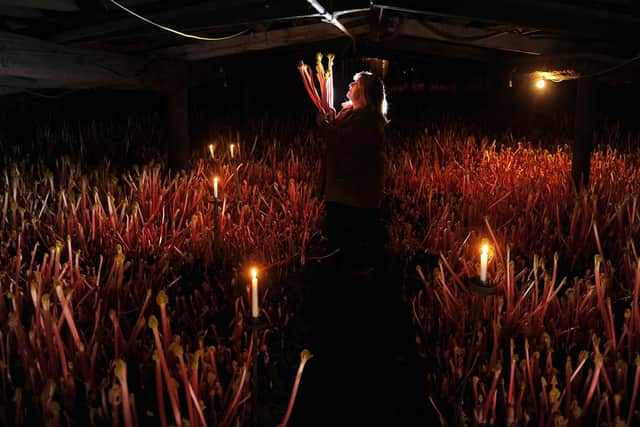

West Yorkshire has ideal nitrogen rich soils for the growing of rhubarb root systems, and after the success of the Whitcliffe family business at one point Yorkshire had over 200 rhubarb growers.
The rhubarb plants spend two years out in the fields without being harvested. While in the fields the plants store energy from the sun in their roots as carbohydrates.
The roots are then subjected to frost before being moved into sheds in November where they are kept in complete darkness.
Advertisement
Hide AdAdvertisement
Hide AdFrom January to March, the pink forced rhubarb is then picked by hand, by candlelight, so that the delicate stems are not turned green and hard by photosynthesis.
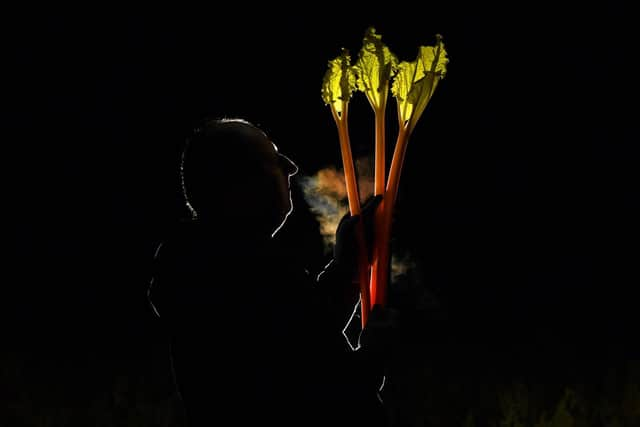

The rhubarb industry continued to thrive within West Yorkshire with the ‘Triangle’ once producing 90% of the world’s forced rhubarb prior to the Second World War.
Technically a vegetable, but eaten as a fruit, the rhubarb was one of the few options available during rationing.
The success of the rhubarb industry in Yorkshire meant a whole transport industry set up around it – with special trains leaving nightly to ship large valuable cargo’s of rhubarb down to the old Covent Garden Market.
Advertisement
Hide AdAdvertisement
Hide AdDespite declining in popularity over the last century, in 2010 the Triangle received a protected status and has enjoyed a revival in popularity since.
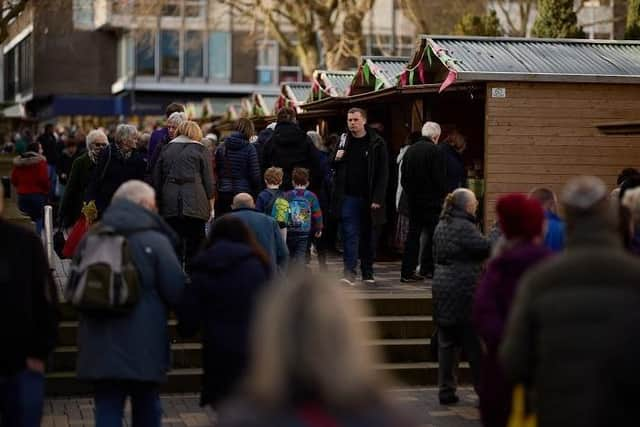

The Rhubarb Triangle Farm in Wakefield is at the heart of the Rhubarb Triangle and continues to grow and harvest hundreds of rhubarb each year.
The Dobson family, owners of the farm, have been farming since 1815 and have served the local community with vegetables for over five generations.
John Edward Dobson, forced some of the first ever Yorkshire rhubarb in the hay loft above the farm’s cows, using the rising heat from the cows to force the rhubarb and bring it to market early.
Advertisement
Hide AdAdvertisement
Hide AdCurrent owner Simon Dobson, and his management team felt it was quite fitting, as they played such a major part in the history of Yorkshire Forced Rhubarb, that the farm be renamed The Rhubarb Triangle Farm Shop.
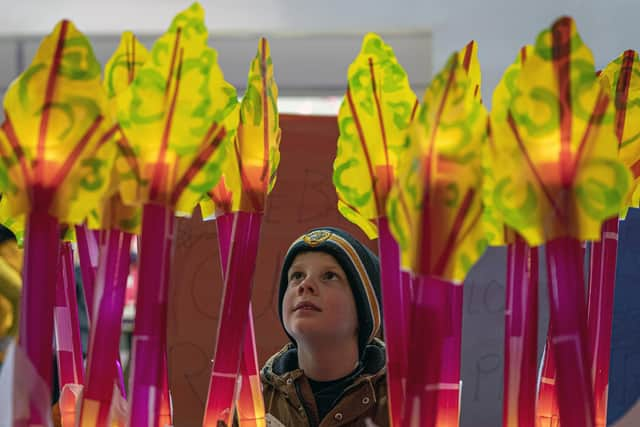

Another defining rhubarb farm was E. Oldroyd & Sons Ltd, which has 5 generations of experience in Yorkshire forced rhubarb production.
Fourth generation rhubarb grower, and Director of E. Oldroyd & Sons Ltd, Janet Oldroyd-Hulme works alongside her two sons to produce some of Yorkshire’s highest quality rhubarb:
She said: "It's a three year period to get the crop that we do and we've got to keep propagating. So not only are we busy harvesting rhubab, in three weeks time, we'll be emptying some sheds of the roots that are in there and refilling them again.
Advertisement
Hide AdAdvertisement
Hide Ad“We currently work alongside Wakefield Council to use this history of the triangle to generate tourism which will then allow us to continue this growing process and keep the rhubarb legacy going.”
Oldroyd’s farm first became a tourist attraction in 1997, initially designed for group bookings. They became so popular that eventually a whole Festival was based around the tours in 1999, so that individuals and families can also see the forced rhubarb growing in the dark being harvested by candlelight, and learn the incredible history associated with this plant
Wakefield’s claim over the pink vegetable alongside Oldroyd’s tours inspired the town to continue the annual Rhubarb Festival as the harvest ends, recognising the success of the Triangle and using some of the incredible rhubarb to make delicous dishes for the community.
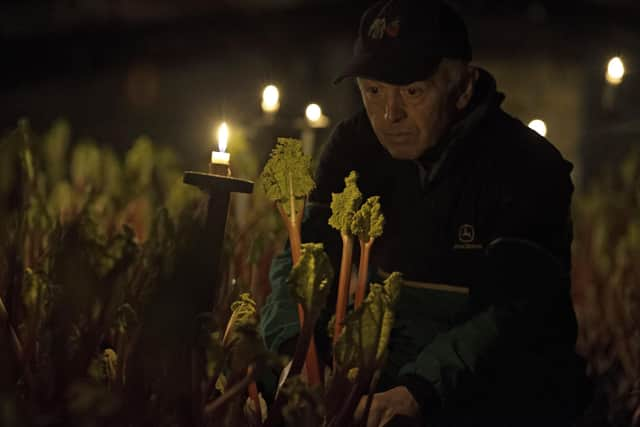

The festival, which has now become a staple within the community, has also helped in increasing the love and demand of the vegetable, with hundreds heading to Wakefield to enjoy and celebrate the rhubarb industry.
Advertisement
Hide AdAdvertisement
Hide AdJanet said: "There's currently a huge demand for rhubarb, and yields are better than expected despite the hot summer, with it being a Siberian plant.
"We’ve had a massive sudden interest by the public, whether that be because of the surge in healthy eating or because of the success of Wakefield’s Rhubarb Festival."
This year, the festival is set to be larger than ever, featuring a weekend full of rhubarb related fun.
The annual event will bring the city centre to life over three days with a full programme of family workshops, comedy nights and the famous food and drink market.
Advertisement
Hide AdAdvertisement
Hide AdThere will be also be a variety of demonstrations from celebrity chefs including the ‘spicy flexitarian’ MasterChef finalist Radha Kaushal-Bolland and Great British Bake Off 2021 finalist Crystelle Pereira as well as Karen Wright (Great British Bake Off) and Bobby Geetha (Great British Menu.)
The festival will also include a Rhubarb Food & Drink Trail around Wakefield city centre, allowing visitors to sample rhubarb cocktails, pastries and dishes from local bars, restaurants and cafes.
Coun Michael Graham, Cabinet Member for Culture, Leisure and Sport at Wakefield Council, said: “The Rhubarb Festival is a wonderful celebration and we are really looking to welcoming visitors from right across the country to enjoy our chefs’ programme, all the opportunities to enjoy delicious food and drink and to take part in entertainment, family workshops and events.
The free festival will run from 10am to 5pm on Friday February 17 and Saturday February 18, and 10am to 4pm on Sunday February 19, 2023, throughout Wakefield city centre.